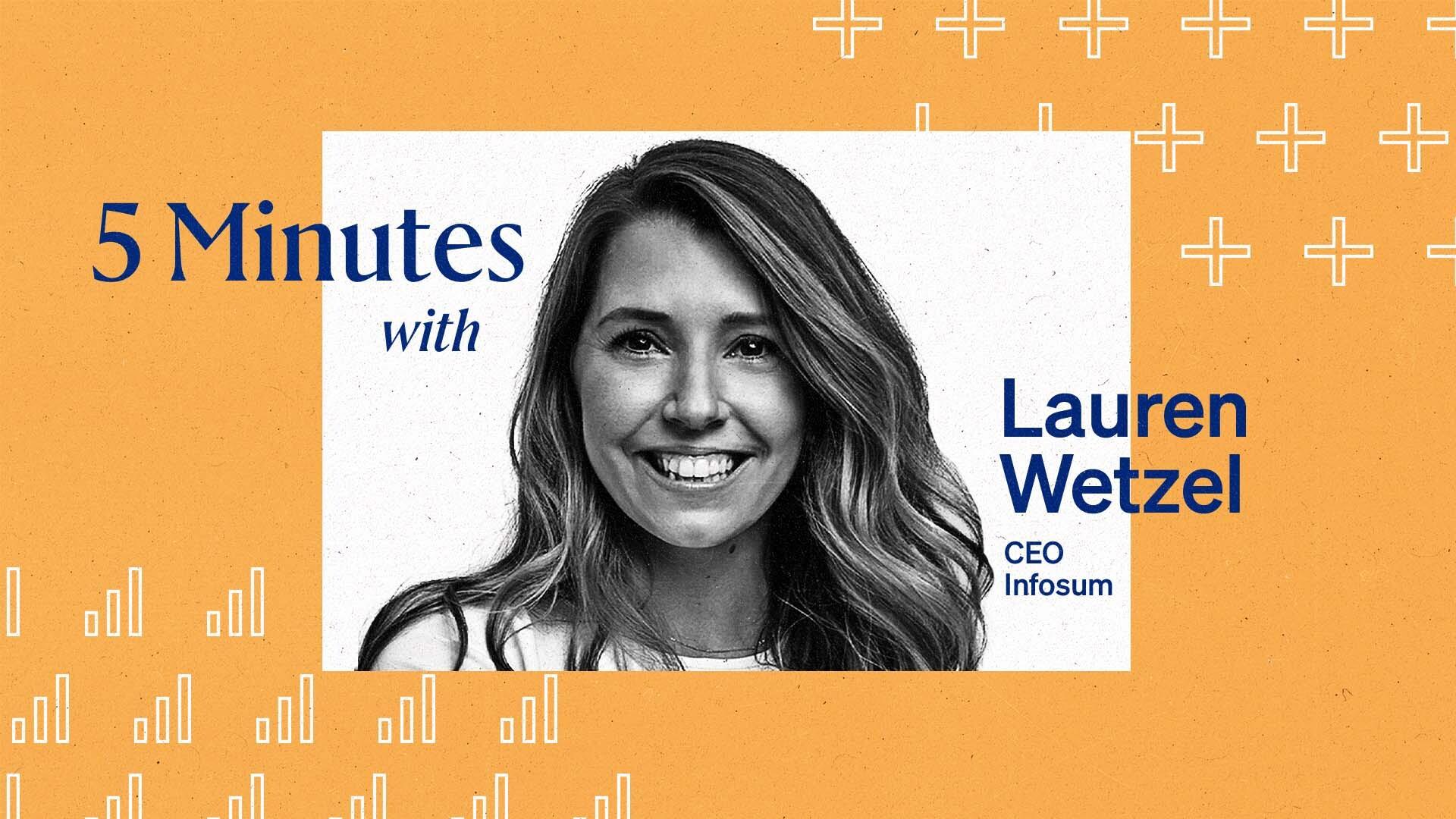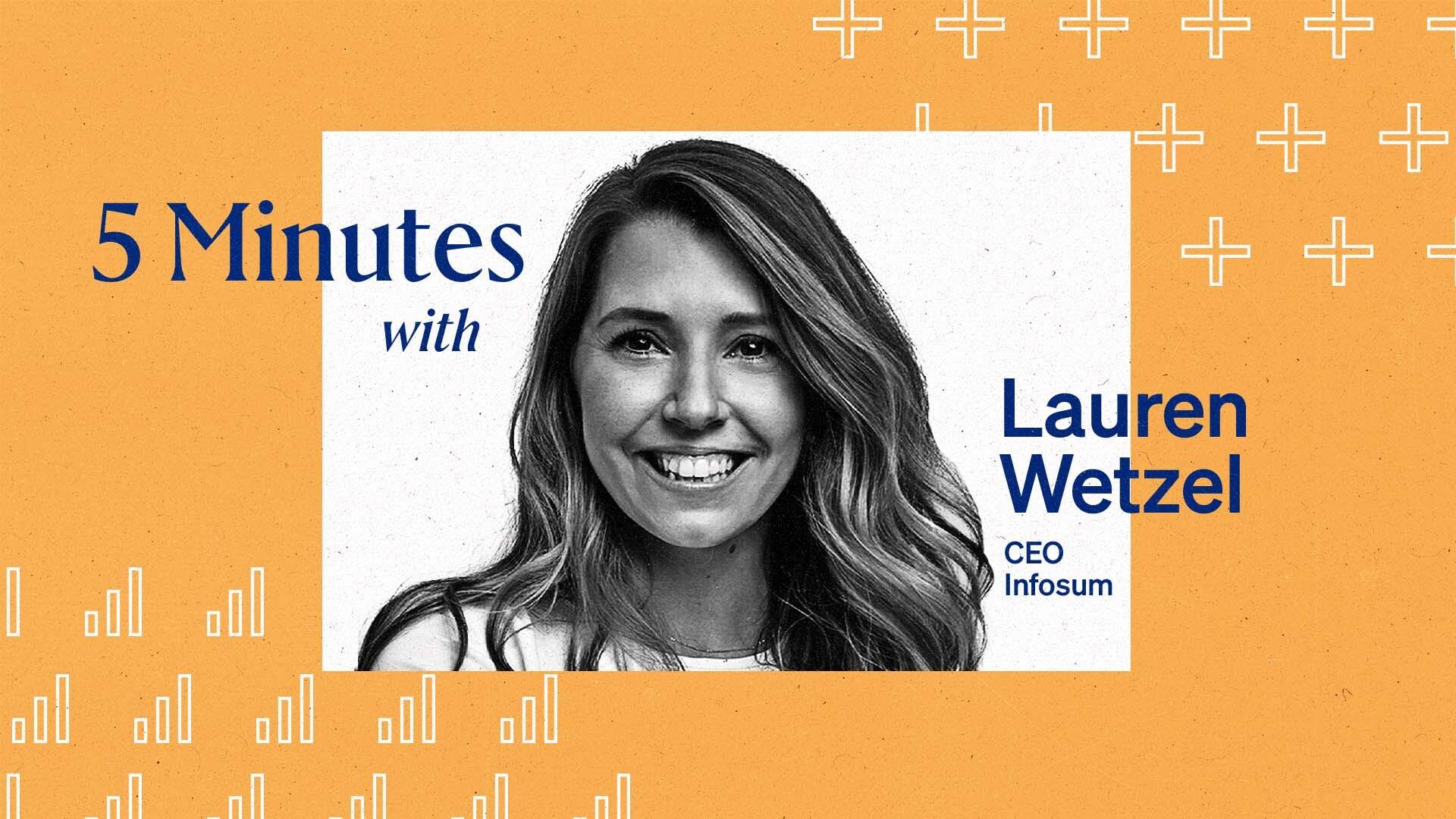5 Minutes with InfoSum’s Lauren Wetzel

Issues like data privacy, consumer trust and solutions for signal loss are increasingly dominating digital advertising conversations, a shift that is making a company like InfoSum arguably more relevant than ever.
The data collaboration platform appointed new leadership this summer, with Lauren Wetzel stepping up to succeed Brian Lesser as CEO. Wetzel, a four-year InfoSum veteran, spoke with The Current Editor-in-Chief Stephanie Paterik about first-party data, clean rooms, why it seems like everything is a media company these days and of course, AI.
Note: We sat down with Wetzel days before she was named CEO of InfoSum. The following interview has been edited for length and clarity.
Let’s talk about first-party data, a topic that you are steeped in. What is on marketers’ minds right now when it comes to first-party data? Are their strategies shifting?
It depends on who you’re talking to, because if you’re talking to someone who’s based in Europe, who’s been under GDPR [the General Data Protection Regulation] for six years, I would say sometimes there’s a massive difference there.
Brands prioritize their consumer relationships, and recognize a consumer's first-party data as one of their greatest assets. However, they need to approach first-party data carefully. Once you mismanage data and once you lose the trust of a consumer — and by lose trust, I mean handle their data in a way that they're not going to be comfortable with—you can never get that back.
It’s not just a CMO’s and brand team’s agenda, it’s a CEO agenda. That reputational risk of “What are you doing with my data and are you protecting it?” While there’s so many studies and examples and case studies of the performance that can come with first-party data, which is why everyone’s running toward it, you have to balance that with new technology and new stringency on “What am I collecting? Should I be collecting it? What am I doing with it? And how do I manage that?”
And so, what we constantly are educating people on is that privacy and performance aren’t at odds, and first-party data is an integral part of that. Embracing bringing your privacy teams into the meeting to evaluate technology is not going to slow you down because it’s going to set you up for success. It will drive performance.
Data clean rooms are a focus of your work. How interested are brands in this right now?
This year more than ever. It’s a testament to it just being a topic that people care about. There are more speaker opportunities than ever, more space and I think a lot of that is because Big Technology companies are saying, “This is going to be an extension of my cloud tools.” But data clean rooms and this technology [are] not about replacing whatever came before it.
I actually got to join a roundtable at Amazon and we all talked about how the entire industry is constantly looking at it as hurdles: Here’s a new hurdle of privacy, here’s a new hurdle that’s safety about data, here’s a new hurdle of signal loss. And everything is in service of trying to replace that or fill that. I think the better way to frame it is: What can we do that we couldn’t do before with the new flavor of measurement? What’s a new product that’s out there? It’s not about just connecting these two parties; it’s about connecting four parties.
It’s about embracing the fact that brands are now media networks. Chase and Uber are now growing their advertising product out in the market — how did they come into the party? I think that’s the best way to think about the tech and it’s a topic for people this year more than ever.
Most of the time it takes to shouting from the rooftops, losing my voice saying, “Hey, care about this.”
You mentioned companies like Uber are getting into the media space. Several years ago, we saw brands embrace this idea from a content standpoint. Now, it seems companies are leaning into the data and advertising opportunities of their platforms as well.
And it creates new channels. T-Mobile is a great example of this, as are Uber and Netflix, companies that have more first-party data that they need to bring in. I think where we come in is we can help create some level of fluidity across those marketplaces, make it easier to power that first-party data without handing over control.
How are you thinking about AI from a data privacy standpoint?
My husband, who does not work in our space, has all these new AI tools which he can use for his job. He asks me all the time this exact question: “Who’s taking my data? Now [that] my company has my data, what are they going to do with it?” I think that’s the biggest question: How do you protect that data? Are you storing that data? What are you doing with that data?
And I think it’s very similar in application to data that’s been feeding advertising for quite some time, which by the way, we as an industry got so wrong. We got it so wrong at the start of advertising. It was just, oh my gosh, we want this to be more relevant and we want to be better at it, so here’s my data.
We didn’t think about the consumer. Does that consumer know who this random company is? Or when a data broker trades that data on a marketplace?” Because I think we got that wrong, I like that everyone’s asking this question and so we’re coming to the table with perspectives.
We’re coming to the table educating on all of the privacy technology and the right methods in the application of first-party data for advertising purposes. They should be training on how they embrace AI exactly the same. Like every company, we want to be better, faster, stronger from the tools they can provide.
Subscribe to The Current
Subscribe to The Current newsletter
